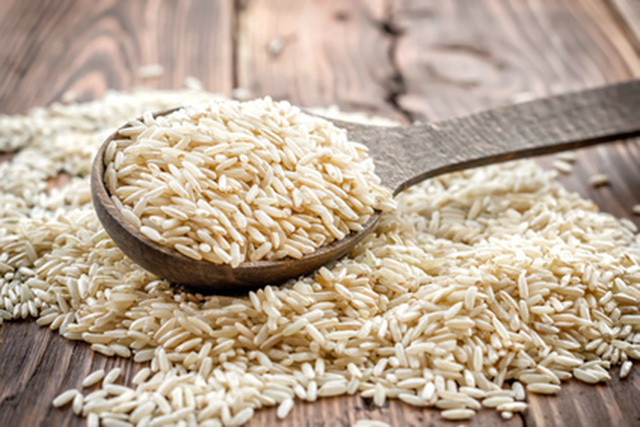Rice is a staple in many cuisines.
However, white rice has been receiving a bad reputation lately, while brown rice is being recommended more often.
So the question is brown rice versus white rice – which is better for your health?
According to a study from the Harvard School of Public Health, white rice can increase the risk of developing type-2 diabetes. White rice has a high glycemic index, which means it can cause spikes in blood sugar.
White rice consumption has increased significantly in the U.S., and type-2 diabetes continues to be a growing epidemic. Many health experts are now looking at the comparisons between brown rice versus white rice.
Another study from Harvard also found that eating brown rice twice a week was associated with a lower risk of type-2 diabetes.
Brown rice versus white rice: Why are they different?
The reason why brown rice has shown more health and nutrition benefits are because of the way it is composed. Brown rice is encapsulated by the brain, which is an outer shell that contains B-vitamins, minerals, and dietary fiber. This makes brown rice a whole grain rice. With white rice, the outer brain and germ of the rice are removed, which means less nutrition.
“The high glycemic index of white rice consumption is likely the consequence of disrupting the physical and botanical structure of rice grains during the refining process,” the Harvard authors write. “The other consequence of the refining process includes loss of fiber, vitamins, magnesium and other minerals, lignans, phytoestrogens, and phytic acid, many of which may be protective factors for diabetes risk.”
B-vitamins have shown many benefits, including lower heart disease risk, relieving stress, memory health, and treats anxiety and depression. Dietary fiber also has a myriad of benefits, including digestive health and weight loss.
“From a public health point of view, whole grains, rather than refined carbohydrates such as white rice, should be recommended as the primary source of carbohydrates” for people in the United States, said Frank Hu, MD, PhD, from Harvard.
Note: None of the information in our website is intended to diagnose, treat, cure or prevent any illness or disease. The content on our website is for educational purposes only.
DON’T FORGET to sign up for our weekly newsletter to get our latest articles, updates, free recipes and giveaways.
For an introduction to quinoa.
Is the bread you’re eating healthy for you?
Gluten the hidden danger.
REFERENCES:
1. “Nutrition Facts and Analysis for Rice, White, Glutinous, Cooked.” Self Nutrition Data. Self Nutrition Data, n.d. Web. 09 Feb. 2015.
2. “Eating White Rice Regularly May Raise Type 2 Diabetes Risk.” Harvard School of Public Health. Harvard School of Public Health, n.d. Web. 09 Feb. 2015.
3. “Eating White Rice Daily Ups Diabetes Risk, Study Shows.” CBSNews. CBS Interactive, 16 Mar. 2012. Web. 09 Feb. 2015.
4. “Brown Rice vs. White Rice: Which Is Better?” WebMD. WebMD, n.d. Web. 09 Feb. 2015.
5. “Is Brown Rice Really Better than White Rice?” GreenMedInfo.com. GreenMedInfo.com, 24 Sept. 2013. Web. 09 Feb. 2015.
6. “Can Brown Rice Slow the Spread of Type 2 Diabetes?” Harvard School of Public Health. Harvard School of Public Health, 3 Jan. 2012. Web. 09 Feb. 2015.
7. “The Benefits of B Vitamins.” Whole Living. Whole Living, n.d. Web. 09 Feb. 2015.

















